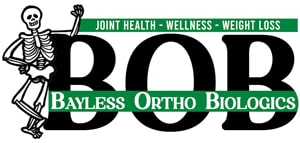Regenerative Medicine
Regenerative medicine is a scientific and medical discipline which focuses on reining the power of stem cells and the regenerative capacity of the body in order to restore the functioning of damaged cells, tissues and organs. The goal of regenerative medicine is to find the path to cure previously untreated injuries and diseases.
Stem cells are present in all of us acting like a repair system for the body. However, with increased age sometimes we don’t get optimum stem cells to the injured area. Regenerative medicine functions to amplify the natural repair system of the patient’s body.
To obtain the stem cells, your doctor administers a local anesthetic to the back of the hip (Posterior superior iliac spine) and takes a small bone marrow sample through a needle. The sampling procedure is called bone marrow aspirate, which is different from bone marrow biopsy and is less painful. Blood is also taken from a vein of the patient’s arm. These sample cells are processed and then re-injected into the area where repair of the damaged tissue is required. Imaging guidance such as real time fluoroscopy or musculoskeletal ultrasound is used along with MRI to plan the location of the injection.
Mesenchymal stem cells (MSCs) are multipotent cells derived from non-marrow tissues, such as umbilical cord blood, adipose tissue, adult muscle or dental pulp of deciduous baby teeth. The isolated MSCs are also injected on the same day, along with natural growth factors obtained from the blood platelets of the patient. The main objective is to deliver a much greater number of stem cells to the injured area to restore its function.
Researchers are employing different approaches for creating new pluripotent stem cell lines, such as in vitro fertilization embryos, nuclear transfer, and induced pluripotent stem (iPS). Different government and private organizations are committed to developing new stem cell-based therapies for chronic, debilitating diseases.
Pluripotent stem cells hold the greatest potential to treat a wide range of diseases but to create new stem cell therapies takes a long time. Before testing pluripotent stem cells in human disease, researchers must grow the right cell type, i.e. differentiation of stem cells, and then their safety is first tested in animals before moving to human trials.
Regenerative medicine has a great potential to cure injured and impaired tissues. Scientists all over the world are researching ways to rein stem cells and use them for diagnosing and treating various disease conditions.
Some risks factors are associated with regenerative medicine and include immune reactions from injected stem cells and also cells may become contaminated with bacteria, viruses or other pathogens that may cause disease. The procedure to either remove or inject the cells also has the risk of introducing an infection to the damaged tissue into which they are injected.
In some cases, certain complications such as formation of tumors can be seen as a result of unproven stem cell treatment.









